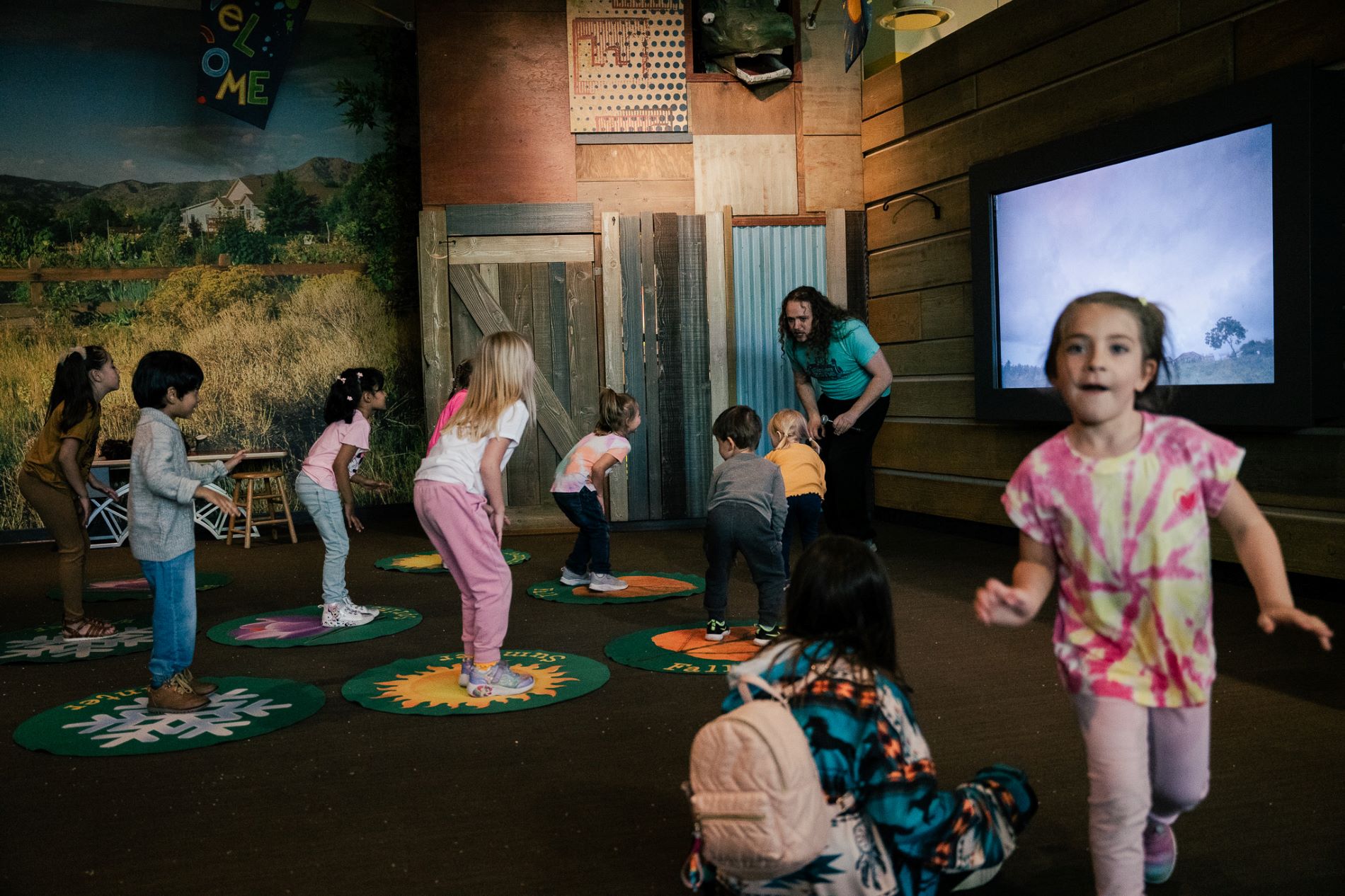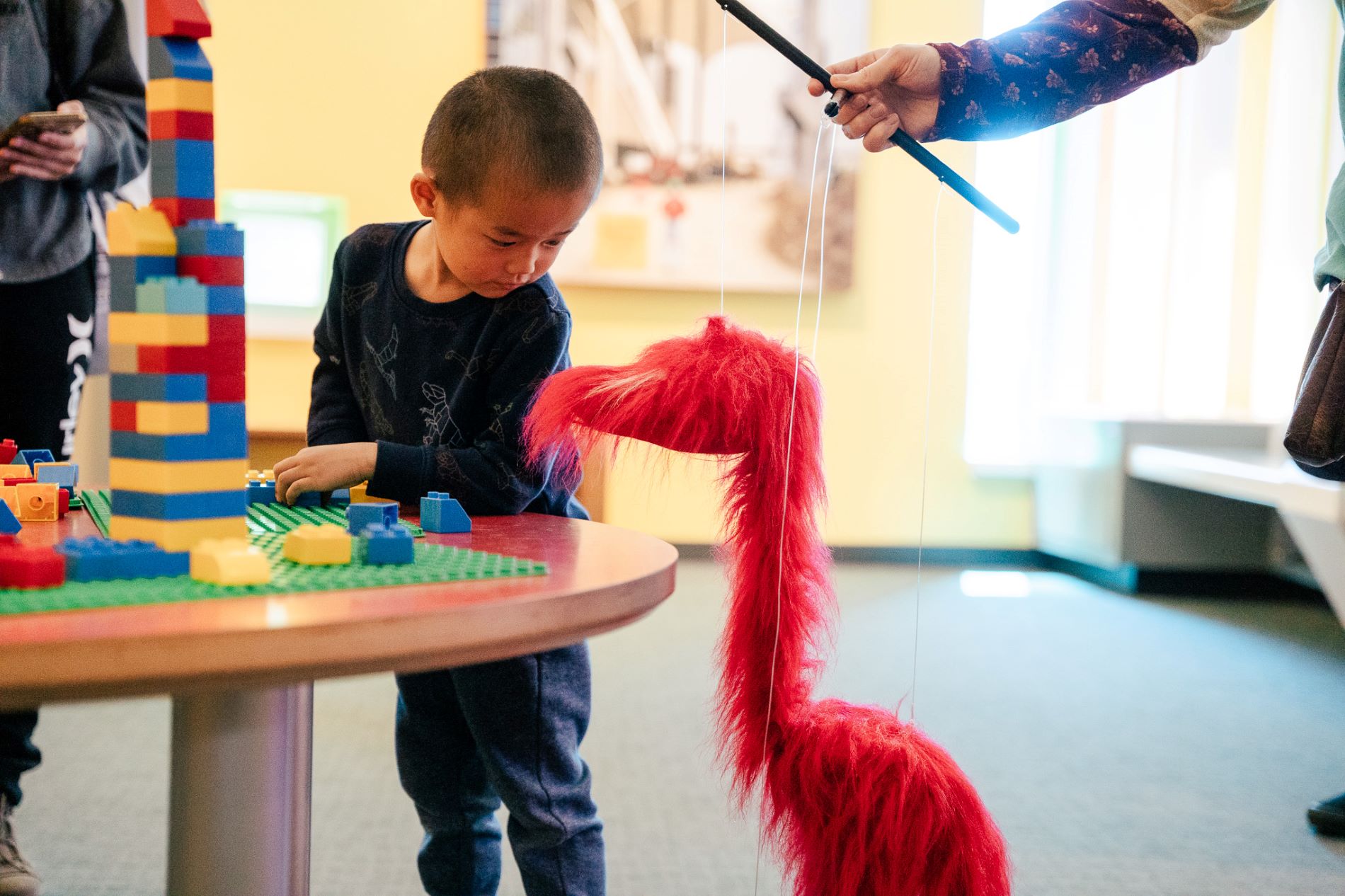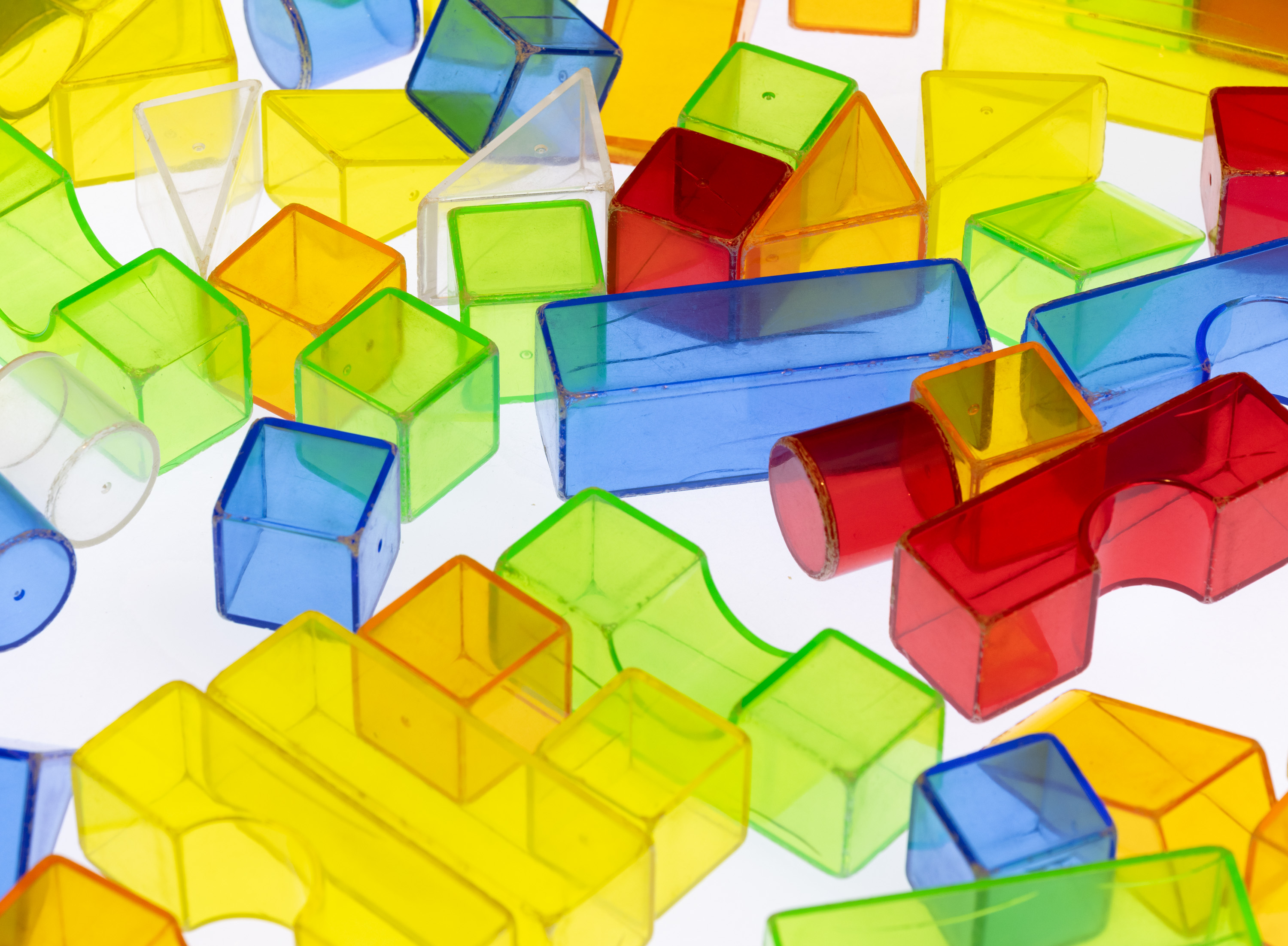Discover the latest news, explore exhibits and connect with the natural world. Visit Catalyst Online
Members receive free admission to the Museum 364 days a year! Become a Member
Take your Museum journey home with you. Visit the Museum Shop
A Place Where Children Live and Learn Science

Even on days when the rest of the Museum seems asleep and people are lazily strolling through the diorama halls or sitting down for an afternoon snack at the café, you can guarantee that something extraordinary is happening inside the Discovery Zone. One of Denver’s must-experience family attractions, the Discovery Zone sits on the second floor of the Morgridge Family Exploration Center on the Museum’s east wing. This year, the beloved space officially turned 10 years-old.
In the Discovery Zone, there is rarely a dull moment: A budding fluid dynamics engineer may be making her first inferences about the miracle of water pressure as she holds her thumb to the tip of a waterspout, coincidentally soaking everyone around her. At the same time, toddler astronauts known as “astro-tots” are flying their maiden voyage to the moon, ready to embark on a quest that tests their wits and determination. And a barrage of red plastic balls is likely to be pelting unsuspecting parents innocently scrolling through their phones just as a flurry of butterflies made from coffee filters and pipe cleaners flutters through a makeshift wind tunnel.

A child playing with blocks looks at a colorful marionette in the Discovery Zone. (Photo/ Mio Sison III)
The 10-year anniversary of the Discovery Zone marks more than a mere passage of time for a beloved exhibit – it represents formative experiences for hundreds and thousands of children who can look back on their time there tenderly. “I think the thing that I liked the most was probably the little Dino Dig thing. I just loved that. And I would hide in the caves all the time,” says Ellie, now 12 years-old, who grew up playing in the Discovery Zone.
Ellie’s experiences there taught her not just about science but about life and relationships. “I learned how to collaborate well with others, because for a while I was extremely independent, and I didn’t realize the importance of teamwork,” she says.
The mission behind the Discovery Zone is to provide the opportunity for kids to naturally do what scientists do, which is to experiment, make inferences and learn through trial and error. Kids may be having the time of their lives, but they’re also being exposed to the principles of scientific inquiry and learning to socialize in a safe environment. “I love going because it provides a lot of social interaction and turn taking. And I think that’s really helped Henry socially,” Andrea Serlet, a regular guest at the Museum, says of her son.
While the space itself is incredibly engaging, it is the educator performers who really bring the experience to life. Building model cities, painting and coloring, petting cockroaches and facilitating demonstrations in the science kitchen are all part of the daily routine, but most importantly, educator performers allow the children to guide the experience and focus on the things that matter most to them.

Construction blocks in the Discovery Zone. (Photo/ Rick Wicker)
Remembering a particularly moving episode when a young Ukrainian refugee came to visit, educator performer Brian Kusic says, “We sat there and talked and colored all afternoon, and it was just incredibly touching. This four-year-old had dealt with things I’ll never understand and feels comfortable telling me so I’m just going to sit here and listen.”
The philosophy of the Discovery Zone is unique among Museum exhibits in that it allows guests to create their own story rather than being asked to follow along with a pre-existing narrative. This approach has a tremendous impact on early learners; numerous studies link play with improved learning and interest in specific subject areas. “It’s exciting to see how proud kids are in that space. It’s a really powerful space, and it’s really special to see kids understand that what they do matters,” says Nikki Parker, manager of Adult and Family Programs.
Looking toward to the next 10 years, the space will evolve alongside the needs of the community to ensure that the experience remains fun, fresh and relevant. “Right now we’re in a really fun space where we know the space is successful… so there may be some fun new redesigns and ways that we can make it an even better experience,” Parker says.
This browser is no longer supported.
We have detected you are using a less secure browser - Internet Explorer.
Please download or use Google Chrome, Firefox or if using Windows 10, you may also use Microsoft's Edge browser.